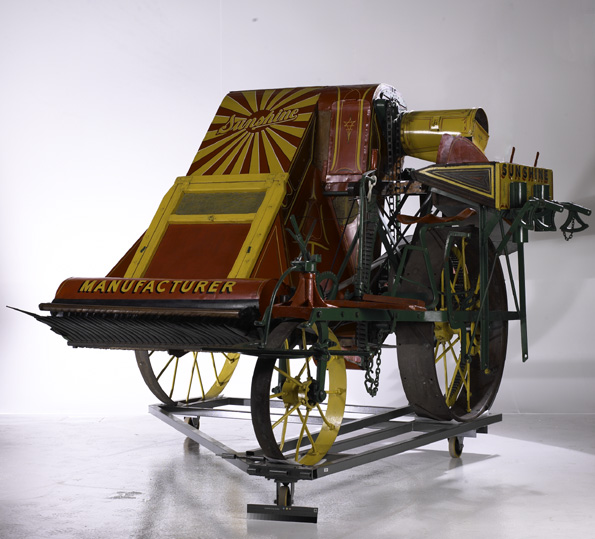 Sunshine stripper harvester, 1884
Sunshine stripper harvester, 1884
TLF ID R6381
This is a Sunshine stripper harvester, the design of which was developed by Hugh Victor McKay on his father's property at Drummartin, Victoria, in 1884. The harvester has three wheels, one at the front and two at the back. It is designed to strip, thresh and clean wheat grain. It is painted in brown and yellow, and features the text 'Sunshine MANUFACTURER'. A painted panel (not visible) features an image of the original harvester in a sun-drenched wheat field along with the text 'The SUNSHINE, The Worlds [sic] Best. TENS OF THOUSANDS OF AUSTRALIAN FARMERS USE THE SUNSHINE. HUGH V McKAY. WORKS. SUNSHINE. Melbourne, Sydney and Adelaide. Agencies in Westralia and Queensland'. The harvester stands 2.3 m high, is 3.4 m in length and 2.8 m wide.
